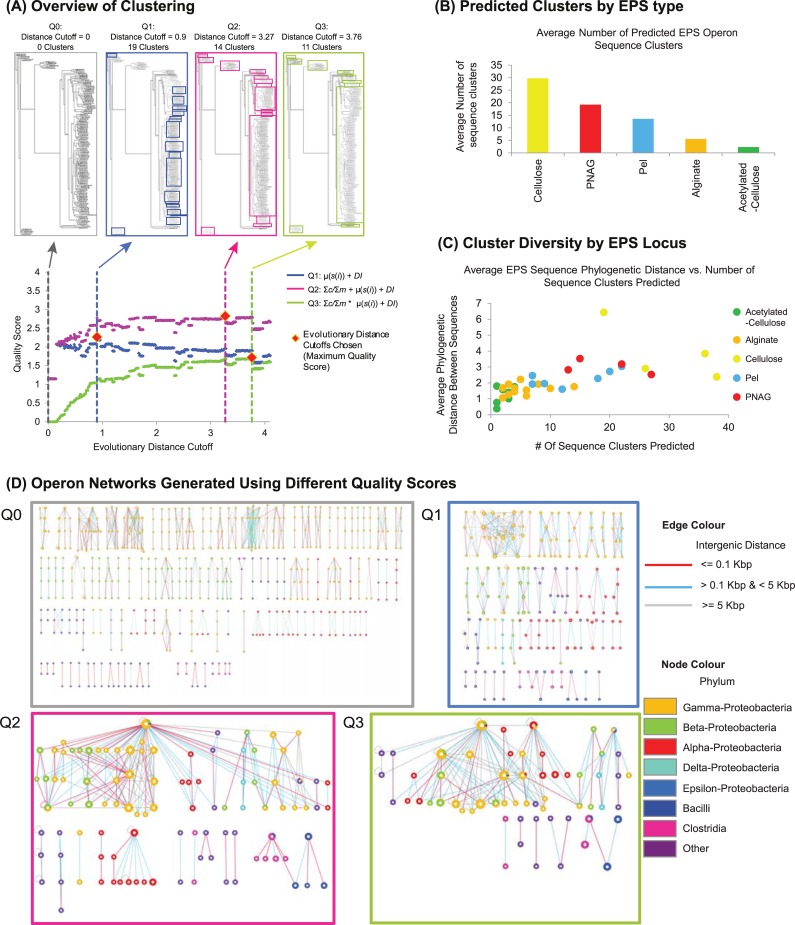Fig 2. Clustering of EPS loci.
(A) Schematic illustrating the process of scanning through a phylogentic tree and identifying sets of clusters associated at different evolutionary distance cutoffs. Here evolutionary distance is defined as the number of expected amino-acid substitutions normalized over the multiple sequence alignment length. To identify optimal patterns of clusters, we examined three scoring schemes (Q1, Q2 and Q3). Q1 is defined as the sum of the average silhouette score for all clusters: μ(s(i)) and the Dunn index (DI). Q2 is defined as the sum of the proportion of sequences identified in clusters (Σc/©m), μ(s(i)) and DI. Q3 is defined as the product of (Σc/Σm) and the sum of μ(s(i)) and DI. For the family of genes related to the bcsA locus, each scoring scheme identifies a different optimal evolutionary distance cutoff resulting in defining different sets of clusters. (B) Graph illustrating the average number of sequence clusters predicted (sum of # of clusters over all loci / total number of EPS loci) for each type of EPS operon. (C) Graph illustrating the average evolutionary distance of EPS loci cluster members with other members of the same cluster. (D) Cellulose operon networks generated using the different types of scoring scheme cutoffs used in (A). For each network, nodes indicate clusters of sequences representing individual cellulose loci, edges indicate genome proximity between the two linked loci. Nodes are organized into sets of four, ordered from top to bottom as bcsA, bcsB, bcsZ and bcsC. Node size indicates the number of family members associated with that locus cluster. Node colour indicates phylogenetic representation of cluster members. Edge colour indicates genomic proximity of phylogenetic clusters. At higher evolutionary distances (as defined by Q2 and Q3), networks yield more informative patterns of evolutionary relationships as illustrated by larger clusters of loci featuring larger number of interconnections.

